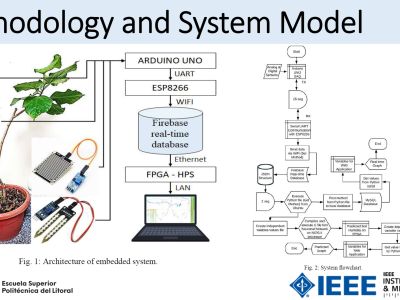plrd

- Citation Author(s):
-
weijian zhang
- Submitted by:
- Weijian Zhang
- Last updated:
- DOI:
- 10.21227/y66n-zm70
- Links:
 42 views
42 views
- Categories:
- Keywords:
Abstract
The \textit{Plectropomus leopardus (P. leopardus)}, a species found in underwater environments, possesses substantial strategic importance due to its rich underwater resources. However, the natural habitat and industrial breeding environment of \textit{P. leopardus} is generally dark and complex, which presents notable challenges to object detection and recognition. In this research, we propose Plectropomus Leopardus recognition using Global Attention mechanism and Transfer learning(PLGAT), integrating a Global Attention Mechanism (GAM) with Transfer Learning to recognize \textit{P. leopardus} in underwater environments. To resist the color variations, the PLGAT directs the model's attention toward salient regions by incorporating the output of the GAM with the vectors from the Head convolutional layer. Additionally, transferring knowledge from a large-scale COCO dataset enhances the model's discrimination capabilities. To validate the effectiveness of PLGAT, we have created an extensive underwater \textit{P. leopardus} recognition dataset (PLRD), consisting of 6,058 annotations across 30 distinct object classes. Furthermore, we evaluate the performance of PLGAT on the widely used Brackish underwater dataset. Through comprehensive experiments, our results demonstrate that PLGAT achieves a mean average precision score of approximately 95\% on PLRD and 97\% on Brackish. These results signify a substantial improvement in recognition performance and highlight the efficacy of our approach compared to the state-of-the-art methods. To foster further research and promote reproducibility, we have made our source code and dataset openly available at \url{https://github.com/wilkinszhang/Recognition-of-Underwater-leopard-coral-grouper}.
Instructions:
The \textit{Plectropomus leopardus (P. leopardus)}, a species found in underwater environments, possesses substantial strategic importance due to its rich underwater resources. However, the natural habitat and industrial breeding environment of \textit{P. leopardus} is generally dark and complex, which presents notable challenges to object detection and recognition. In this research, we propose Plectropomus Leopardus recognition using Global Attention mechanism and Transfer learning(PLGAT), integrating a Global Attention Mechanism (GAM) with Transfer Learning to recognize \textit{P. leopardus} in underwater environments. To resist the color variations, the PLGAT directs the model's attention toward salient regions by incorporating the output of the GAM with the vectors from the Head convolutional layer. Additionally, transferring knowledge from a large-scale COCO dataset enhances the model's discrimination capabilities. To validate the effectiveness of PLGAT, we have created an extensive underwater \textit{P. leopardus} recognition dataset (PLRD), consisting of 6,058 annotations across 30 distinct object classes. Furthermore, we evaluate the performance of PLGAT on the widely used Brackish underwater dataset. Through comprehensive experiments, our results demonstrate that PLGAT achieves a mean average precision score of approximately 95\% on PLRD and 97\% on Brackish. These results signify a substantial improvement in recognition performance and highlight the efficacy of our approach compared to the state-of-the-art methods. To foster further research and promote reproducibility, we have made our source code and dataset openly available at \url{https://github.com/wilkinszhang/Recognition-of-Underwater-leopard-coral-grouper}.







